What to Include in a Vegetable Garden for Kids
Want to create a vegetable garden for kids? Check out this easy plan to make gardening fun, from raised beds to container gardening!
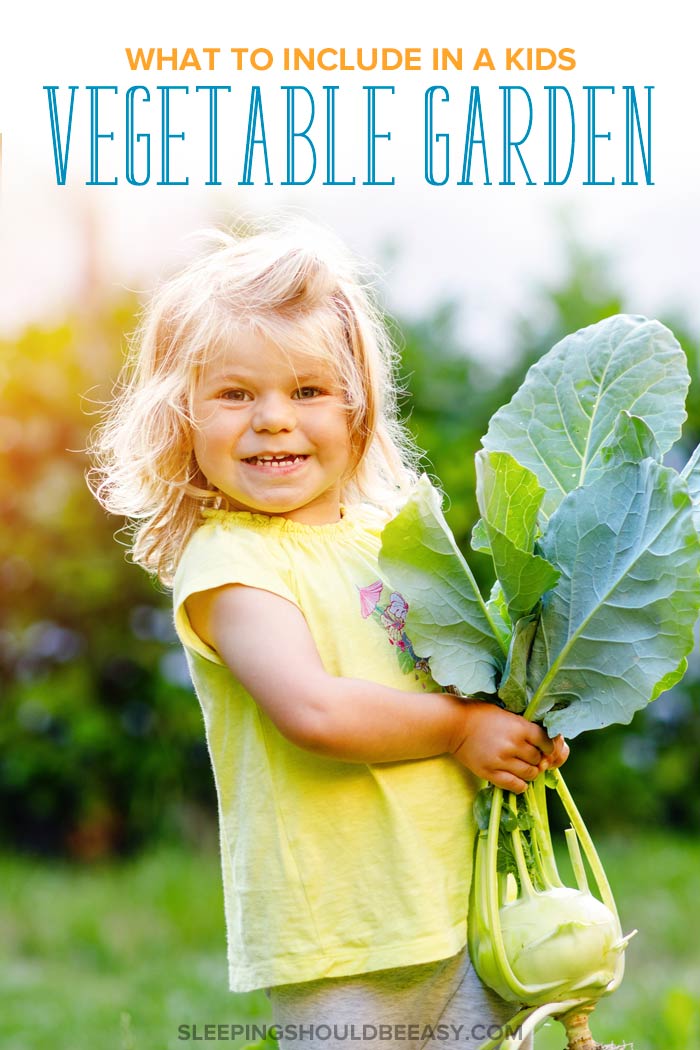 One of the perks of having a backyard is being able to create a vegetable garden for your kids, from raised beds to a tower of strawberries. But don’t think that you need a large space to benefit from growing food with your little ones. Because when I started, all we had were spinach and Swiss chard growing in 6″ pots on our patio.
One of the perks of having a backyard is being able to create a vegetable garden for your kids, from raised beds to a tower of strawberries. But don’t think that you need a large space to benefit from growing food with your little ones. Because when I started, all we had were spinach and Swiss chard growing in 6″ pots on our patio.
Whether you’re growing rows of cabbages in the ground or herbs outside your window, you can have homegrown food that you and your kids cultivated. Even if you bought most of the ingredients for a sandwich, there’s nothing like harvesting lettuce leaves to complete the meal.
I wanted to share with you a few of the tips that have helped me create a vegetable garden for my kids. This shouldn’t feel like a chore, but a curious anticipation of what you’ve planted. Your kids will take to the garden in their own way—some might check their crops every day while others are just fine knowing their tomatoes made it into the soup.
So, take a look at these ideas when creating a vegetable garden with your kids. I hope they can inspire you along the way:
Table of Contents
1. A “hideaway” room
Disclosure: This article contains affiliate links. As an Amazon Associate, I earn from qualifying purchases.
Create a spot that your kids can “hide” in or use like a room.
One way to create a room is to make a teepee structure. Grab bamboo or metal poles that are at least six feet long (the longer the poles, the larger the space inside the structure). Poke one end of the poles in the ground like a circle, and tie the other ends at the top to make a teepee. Leave an entrance so your kids can go inside.
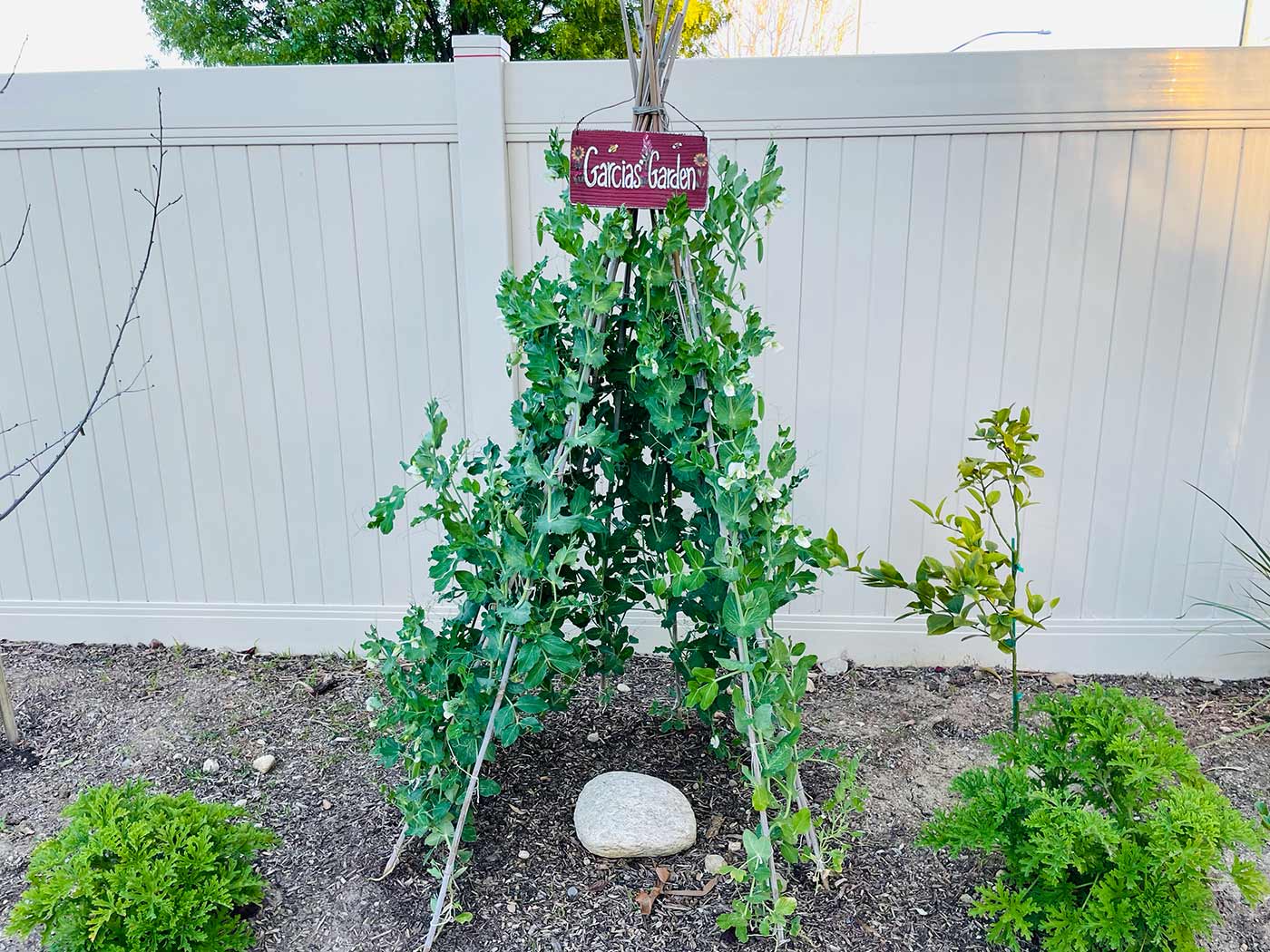
Then, plant climbing vegetables like snap peas, cucumbers, and green beans at the base of each pole. Their vines can eventually climb the poles and cover the teepee. Lastly, make the inside inviting by placing a large rock or stump to sit on or, if the teepee is large, a space to put a blanket on.
Another way to create a room is with sunflowers. Many varieties grow enormously tall, especially if you give them ample room to grow. Plant the sunflowers about one foot apart in a square shape, leaving space for your kids to enter. Place a bamboo pole to tie each sunflower onto so it doesn’t bow down.
Lastly, you can use an arch to create a private space as well, especially if it’s against a wall or fence. Climbing vegetables or flowers can grow up both sides of the arch and meet in the middle to create a roof. Place a bench beneath the arch they can sit on and relax.
Free email challenge: Looking for actionable steps and quick wins in parenting? The Better Parenting 5-Day Challenge is for parents who know they want to improve but need that little nudge and supportive guidance to do so.
You’ll get one actionable tip per day that you can do to transform the way you raise your child. This is your chance to challenge yourself and make the changes you’ve been meaning to make. Join my newsletter and sign up today—at no cost to you:
2. A garden bed for the kids
You may not want to have the kids take over the whole garden, so a great way to include them is to set aside a particular garden bed for their use.
In our garden, I divided a 4 x 4 foot bed into quarters, where the twins each have a quarter and my eldest has half. I let them pick out whichever vegetable, flower, or herb they want to grow. I only limit their choices when it comes to how many they can plant in their spot and for which season.
Use garden labels to mark their plots or plants to give them a sense of ownership. (Use rock painting kits to make the markers!)
Expert tip
Have a “theme” for the bed to tie it all in. For instance, their bed can be a “pizza bed” where they’ll grow cherry tomatoes, onions, bell peppers, and basil.
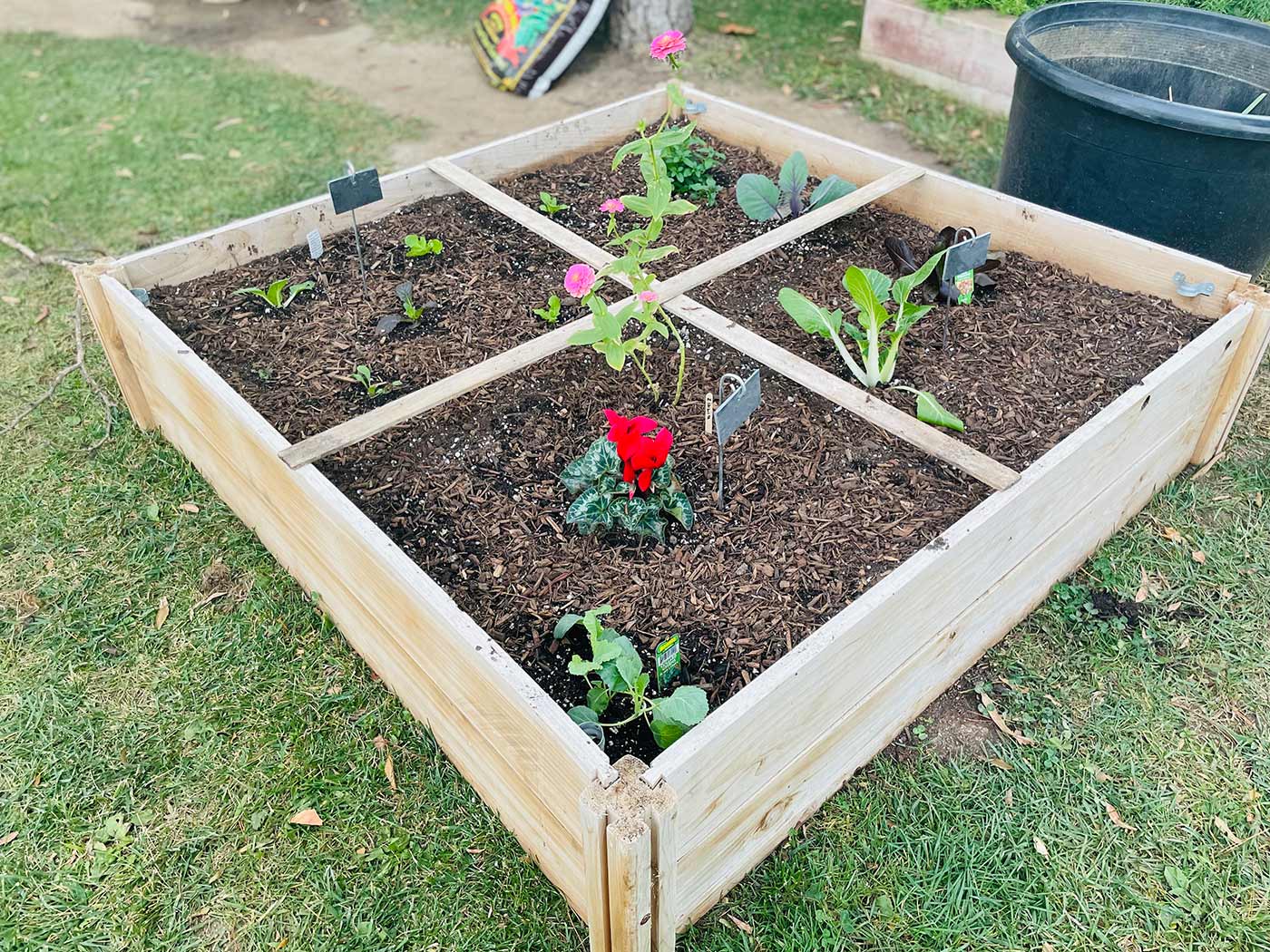
3. Root vegetables
Root vegetables like carrots, potatoes, beets, and radishes are favorites among kids come harvest time. Carrots look like wavy, green leaves until your kids get to pull them from the ground. You’ll know they’re ready when you can see their “shoulders” poking up.
Potatoes are also fun because kids get to dig in the soil looking for spuds left in the ground. Finding potatoes can become a treasure hunt as they dig beneath with their hands.
And radishes are some of the quickest vegetables to grow and harvest—spring varieties can be ready within a month.

4. Unique and interesting vegetables
Want to truly delight your kids with amazing vegetables? Grow unique varieties you normally wouldn’t see in a typical grocery store. This can show them the true variety of vegetables and serves as fun conversation starters for kids during your meals. Here are a few suggestions:
- Purple vegetables (like beans, peas, broccoli, potatoes, basil, and kale)
- “Watermelon” radishes (plant these in the fall)
- Rainbow corn, carrots, and chard
- Black or green tomatoes
- Long beans
- Pink celery
- Luffa (edible when small or leave them to dry to use as a bath sponge!)

5. A strawberry tower
I’m a fan of the GreenStalk, which is a vertical gardening system that allows you to stack containers on top of each other. This has worked well with strawberries in particular. With seven tiers and six pockets to a tier, you can have up to 42 strawberry plants!
The trick is to plant several varieties of strawberries not only for different flavors but to have a longer harvesting period. The tower makes it easy for kids to spot ripe strawberries and, more importantly, harvest them for a sweet snack.

6. Fruit trees and bushes
Don’t forget to include a few fruits in your garden! Besides strawberries, blueberries also make a great addition to a kids’ garden. They’re best planted in large pots because then you can use acidic soil which they love. They’re bushy and decorative and, of course, make for fun picking and harvesting.
Consider other dwarf or semi-dwarf fruit trees as well. Citrus trees like lemon and pomelo can be planted both in-ground as well as in pots. Even fig trees can be grown—if you live in a cold area, grow them in a pot with wheels that you can bring indoors during the winter.

7. Herb garden
Growing herbs is a fantastic way to have a garden without a whole lot of space. A simple window box with three herbs can be all it takes to include them in your cooking.
To up the ante, consider a dedicated herb garden in an area of your space. They’re so aromatic, making them a great sensory experience for little ones. Several favorites include oregano, thyme, basil, parsley, mint, sage, and rosemary.
I have herbs in multiple areas of the garden, from terracotta pots to planted in-ground. But the biggest area is a “pallet wall” where I reused old pallets and hung metal pots of herbs.

8. Garden tools
Garden tools just for kids can make outdoor tasks easier and more fun. Small spades are perfect for planting seeds and seedlings, while gloves protect their hands. Don’t forget a rake to smooth soil and collect fallen leaves, and hoes for easy weeding. Invest in real tools that last and can grow along with them.
Hang a “welcome” sign on an arch, or the name of your family’s garden on a teepee trellis. You can also add a decorative rain gauge to the garden! Measure how much rain you received to know when to water next.
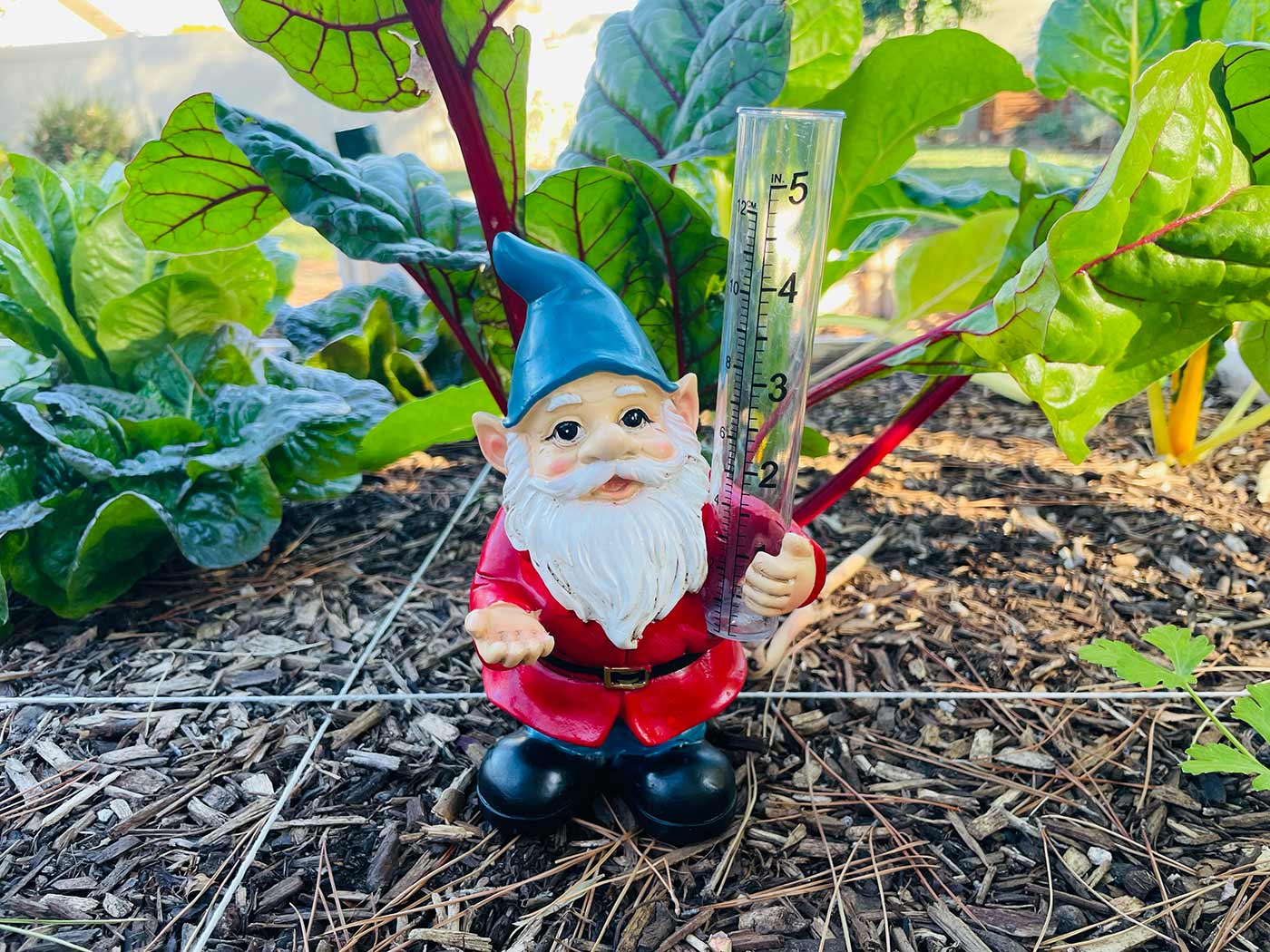
9. Beneficial insects and creatures
Invite beneficial insects like bees, butterflies, and birds into your garden! They help pollinate your vegetables and eat other insects that eat your crops.
The best way to welcome beneficial insects is to do absolutely nothing. Don’t freak out and spray with pesticides if you see aphids on the peppers. Instead, squish what you can or water them off—the scent can attract ladybugs that can take care of the problem for you.
Then, create a habitat for these friendly creatures. For instance, hang a bug hotel to give them a place to rest and make a nest.
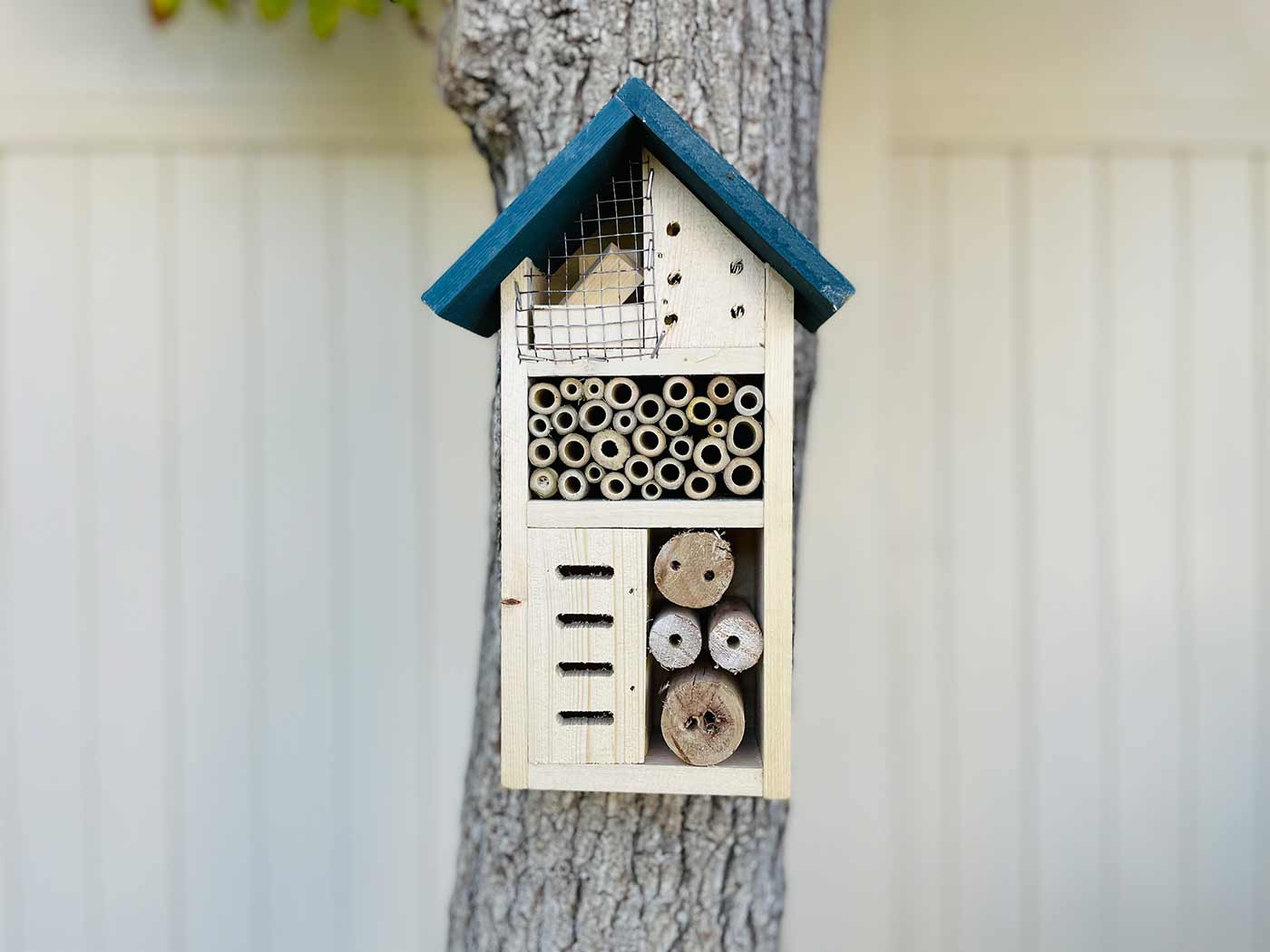
Plant milkweed (make sure to plant the ones native to your area!) so your kids can witness the different stages of a monarch butterfly.

Place a birdbath in your garden, complete with insect-friendly flowers beneath to lure bees and birds into your yard.
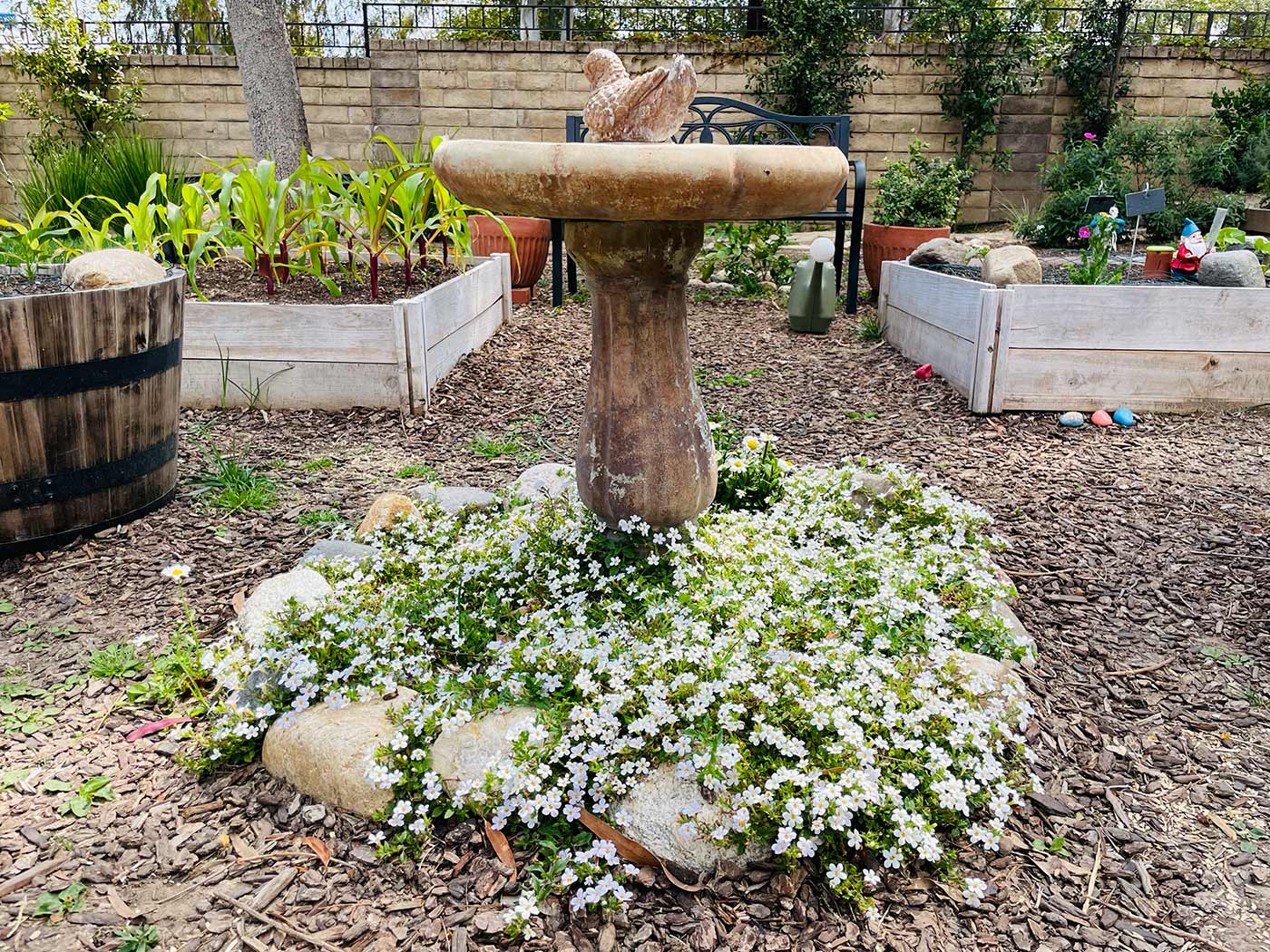
And plant flowers like marigolds and nasturtiums which can deter or lure pesky insects away from your prize crops.
10. Compost pile
Teach your kids the importance of turning waste into nutritious soil by having a compost pile. Combine spent plants and kitchen scraps with dry materials like brown leaves or shredded paper. You can leave them in a pile for slow composting, or turn them regularly with a pitchfork for rich compost in as little as two months.
Even those without a yard can have a compost pile! Compost tumblers contain the materials in one enclosed place and make it easy for you to crank and turn them around.
Conclusion
Creating a vegetable garden for kids can be a fun activity for the whole family. Use trellises and arches to make a hideaway spot, and plant root vegetables that are fun to pull and harvest. Set aside a dedicated garden bed that the kids can decide what to do with.
Plant unique and interesting vegetables they’ll love, like different-colored crops. Include a strawberry tower as well as other simple fruit trees and bushes. An herb garden makes for an aromatic (and delicious!) experience. Get creative with garden markers and other useful decorations.
Invite beneficial insects and creatures with bee hotels, milkweed, and bird baths. And lastly, don’t forget the compost pile to turn all those spent plants, kitchen waste, and brown leaves into rich soil.
Gardening with my kids continues to be a fun family activity we all enjoy participating in. We’ve come a long way from those 6″ pots of spinach and chard, and who knows what new and interesting garden ideas we’ll learn next.
Don’t forget: Join my newsletter and sign up for the Better Parenting 5-Day Challenge today—at no cost to you:

